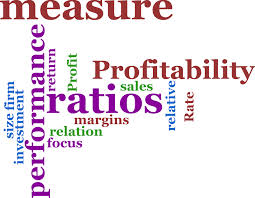
Business is all about decision making, trial and error, and growth. To determine your business’s successes and setbacks, you need to know how to measure performance. You can do this by creating and analyzing small business financial ratios.
Small business financial ratios let you compare current financial numbers to past performance. And, you can use small business ratios to make changes for the future. Instead of blindly running operations, financial ratios give you the data to make informed decisions.
What are small business financial ratios?
Financial, or accounting, ratios are percentages, decimals, or multiples that quantify the health of a business. These numbers show you how your business is doing during a specific time.
You can calculate financial ratios for small business by looking at your business’s financial statements. There are three types of financial statements: balance sheet, income statement, and cash flow statement. Most ratios come from the income statement or balance sheet.
Small business financial ratios show you what the numbers in your financial statements mean. Is your business doing well, or can you make improvements to your startup business plan?
In some cases, there is no standard healthy or unhealthy ratio number. Ratios will vary from industry to industry.
There are many different small business financial ratios you can use. Each ratio tells you something different about your business, like profitability and debt. Here are a few financial ratios you can use to determine the health of your growing business.
1. Gross profit margin ratio
The gross profit, or gross margin, ratio measures how much money you have from sales after subtracting the cost of goods sold (COGS). COGS are how much it costs you to produce a good or service that you intend to sell. Gross profit is a percentage. Use your business’s income statement to find the gross profit margin ratio.
Gross profit shows you how much money on the dollar your business earns. For example, a 50% gross profit margin ratio means you earn 50 cents for each dollar customers pay you. The other 50 cents goes toward COGS.
When you change pricing strategies or automate processes, your gross profit margin ratio may change.
Formula
You can find the gross profit margin ratio by using the following formula:
Gross Profit = (Revenue - Cost of Goods Sold) / Revenue
Example
Let’s say you have $20,000 in revenue and $5,000 in cost of goods sold. Take a look at how the formula would look:
($20,000 - $5,000) / $20,000 = 0.75
You would have a gross profit of 75%. You earn 75 cents for every dollar in sales and spend $0.25 for every dollar on COGS.
2. Profit margin ratio
The profit margin ratio is a percentage that shows you how much you earn after deducting all expenses. This is the leftover money after you subtract expenses like overhead and operating costs.
You will see how much of each dollar your business retains after deducting expenses. A 30% profit margin means your business has 30 cents for each dollar after expenses.
Use your business’s income statement to find the profit margin ratio.
Formula
Use the following formula to find the profit margin ratio:
Profit Margin = (Revenue - Expenses) / Revenue
Example
You have $200,000 in revenue and $190,000 in expenses. Here is how the formula would look:
($200,000 - $190,000) / $190,000 = 0.05
You have a 5% profit margin, meaning five cents of each sales dollar is remaining for your business. The other 95% of earnings go toward expenses.
This is a low profit margin. But, profit margins vary by business, so you might want to check out industry averages. Most businesses aim for having margins above 25%.
3. Quick ratio
The quick, or acid test, ratio is used to evaluate your company’s ability to meet short-term financial obligations.
Quick ratios measure short-term liquidity, so it does not include inventory. Liquidity is your business’s ability to pay off current liabilities (debts you must pay off within 12 months) with current assets (items your business has that can easily be converted into cash within 12 months).
Use the quick ratio to determine how many dollars you have in assets compared to dollars in liability. Quick ratios are decimals. You can find the numbers you need on your business’s balance sheet.
You should have a quick ratio of 1.0 or more to be able to meet your financial obligations. 1.0 means that you have $1.00 in liquid assets per $1.00 of current liabilities. If you have below a 1.0, it means you are unable to pay all your liabilities.
Formula
You can find the quick ratio using one of the following formulas:
Quick Ratio = (Cash + Marketable Securities + Accounts Receivable) / Current Liabilities
OR
Quick Ratio = (Current Assets - Inventory) / Current Liabilities
Example
Let’s use the first quick ratio formula. You have $8,000 in cash, $0 in marketable securities, and $3,000 in accounts receivable. You have $4,000 in current liabilities:
($8,000 + $0 + $3,000) / $4,000 = 2.75
Your quick ratio is 2.75. This shows that you have $2.75 in assets per $1.00 of liabilities, which means you have enough to meet financial obligations.
Now, we’ll use the second quick ratio formula. You have a total of $20,000 in current assets. Inventory makes up $5,000 of your assets. You have $20,000 in current liabilities:
($20,000 - $5,000) / ($20,000) = 0.75
Your quick ratio is 0.75, which means you only have 75 cents of assets per $1.00 of liabilities. You do not have enough to cover your obligations.
4. Current ratio
The current ratio is similar to the quick ratio, but it also measures your ability to pay long-term debts. So, the current ratio looks at how many assets, including inventory, you have compared to liabilities.
Use the current ratio to determine if you can meet both immediate and future financial obligations.
The current ratio is in decimal form. If you have a number of 1.0 or more, you know that you have at least $1 in assets per $1 in liabilities. Your business should have 1.0 or more if you want to meet your financial obligations.
Formula
Here is the current ratio formula:
Current Ratio = Current Assets / Current Liabilities
Example
You have $50,000 in current assets and $40,000 in current liabilities. Take a look at how the formula would look:
$50,000 / $40,000 = 1.25
You would have a current ratio of 1.25, meaning you have more in assets than liabilities and are able to meet your financial obligations.
5. Return on investment (ROI) ratio
The ROI ratio shows you how much your company gained from an investment you made. ROI is a percentage and helps you determine which investments were successful and which weren’t.
ROI compares how much money an investment brought in to how much you paid for it. It shows you whether your investment is profitable or not. A high ROI ratio means you receive more income per investment, which is good.
Formula
Here is the formula for determining your return on investment ratio:
ROI Ratio = (Gain from Investment - Cost of Investment) / Cost of Investment
Example
Let’s say you want to measure the ROI of your marketing strategy. You have $9,000 in gain from investing in Google Adwords advertising, and your cost of investment was $5,000:
($9,000 - $5,000) / ($5,000) = 0.8
In this example, you made a good marketing investment since 80% is high. You could compare this to other investments in your small business marketing budget to help you analyze which investment was best.
Who benefits from seeing ratios?
As the business owner, you can lead your company based on ratios. But, you aren’t the only person interested in seeing your small business financial ratios.
Investors and lenders also want to see your financial business ratios. When asking for funding, investors and lenders can determine your business’s profitability and their risk level from ratios. If you want to secure funding, know your numbers.
Please feel free to contact Dispatch Media Group for small business marketing / advertising advice. Looking to reach the Columbus market? Visit our website for more information about our advertising and marketing solutions. We can reach up to 96% of the Columbus DMA with our award-winning Print & Digital assests.

Rated #1 Newspaper in Ohio, #1 Alternative Newspaper in Ohio, selected as the Best Digital Agency by Local Media Association and are a Premier Google Partner.



